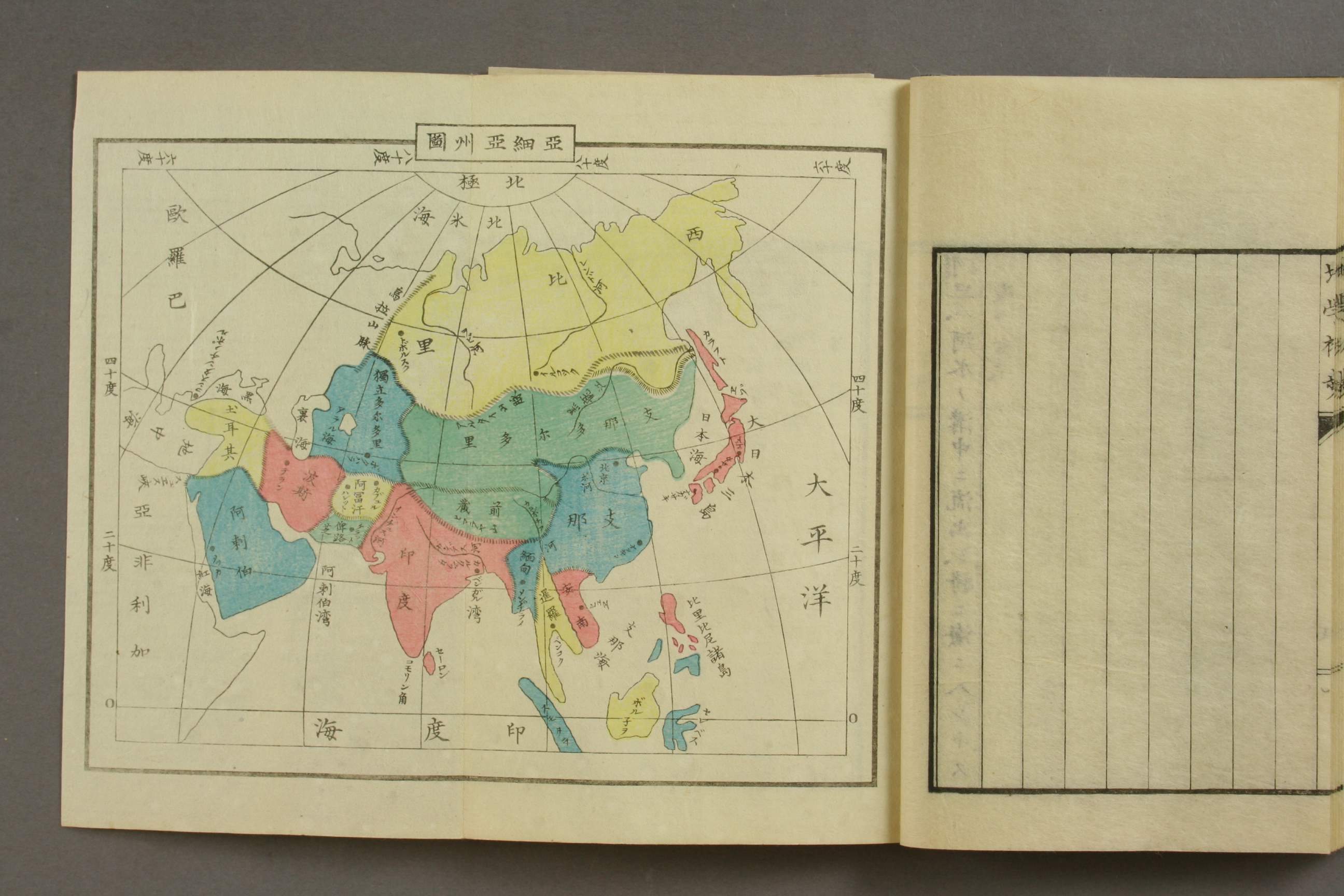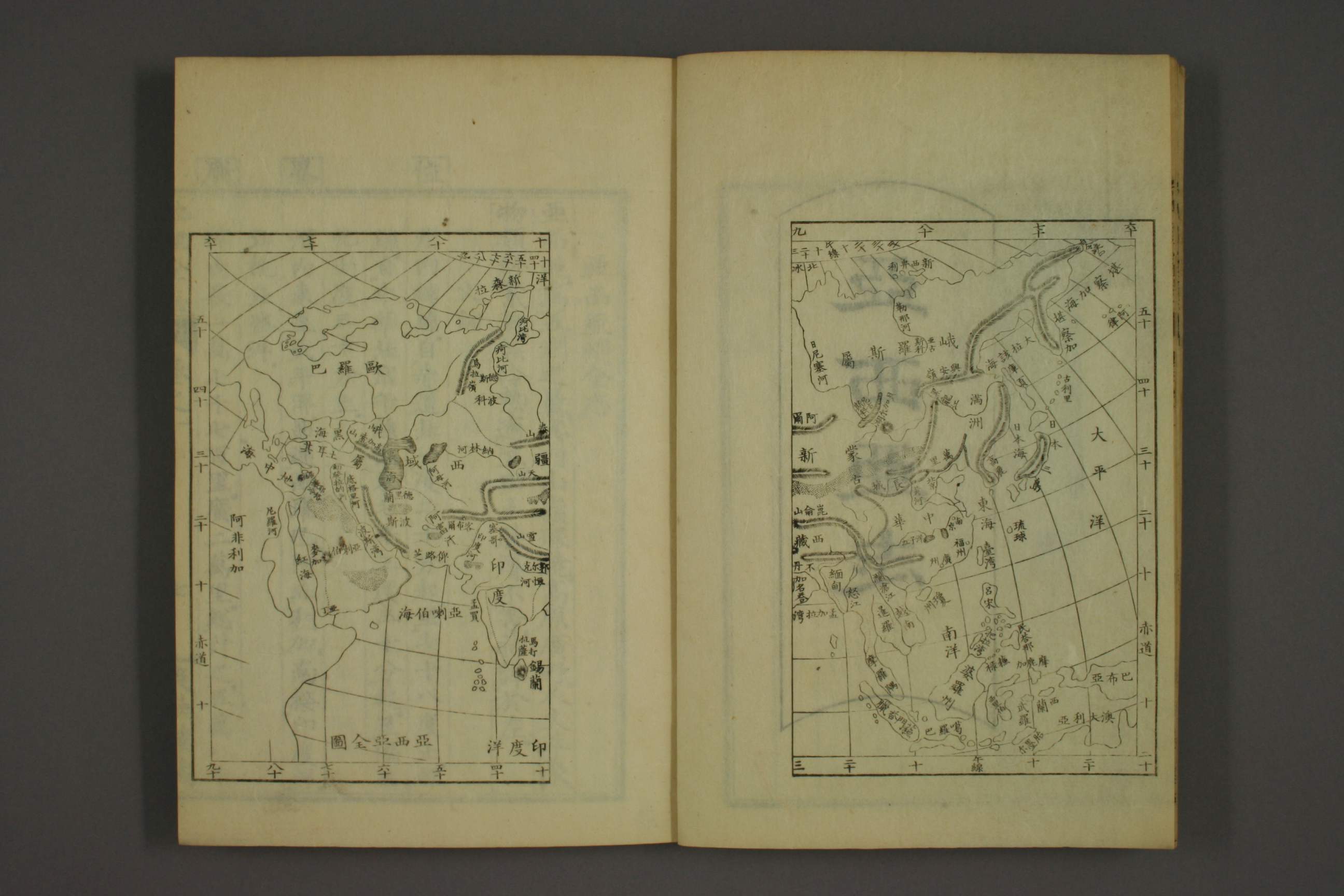-
몇 해 전 서울대학교 박물관에 소장되어 있는 보물 849호 ‘곤여만국전도’라는 지도가 경기도 남양주시 광릉에 있는 봉선사(奉先寺) 것일 수 있다는 가능성이 제기되어 화제가 된 적이 있다. 봉선사 측에 따르면 이 지도는 왕실에서 하사한 건상곤여도병(乾象坤與圖屛)으로 사찰 귀중목록 1호로 보관하고 있었으나 한국전쟁 때 분실되어 행방을 알 수 없다가 1980년대에 일본에서 발견된 후 현재 서울대학교에 보관 중이라는 주장이었고, 서울대 측에서는 이 지도는 1930년대부터 박물관에 소장되어 온 것이며, 봉선사본은 한국전쟁 때 유실되어 없어졌다고 봉선사 측의 주장을 일축했다.

- ▲ 이 지도는 1602년 마테오 리치가 펴낸 곤여만국전도의 바티칸박물관본으로 우리나라 주변만을 나타낸 것이다.
- 곤여만국전도(坤與萬國全圖)는 만력제(萬歷帝)로 알려진 명나라 신종(神宗) 때인 1602년 천주교 전교를 목적으로 중국에 들어온 예수회 선교사 마테오 리치(Mateo Ricci)가 편찬하고 공부(工部)의 관리인 이지조(李之藻)가 판각한 한자로 표기된 세계 최초의 세계지도다. 이 지도는 전체 크기가 가로 414cm, 세로 179cm의 대형 지도로 6폭으로 나눠 제작되었는데 전교가 주목적인 리치는 중국인의 세계관에 동조할 양으로 중국을 지도의 중앙, 즉 세계의 중심에 배치하고, 지구의 중심이 되는 경도 0도를 북경에 맞추는 배려도 서슴지 않았다.
지 도의 전체적인 형태는 달걀 모양의 타원체로 16세기경 유럽에서 세계지도 제작시 많이 사용되었던 아피아누스 도법(Apianus projetion)에 의해 제작됐다. 이 도법은 1524년 독일인 아피아누스(Petrus Apianus)가 발표한 것으로 면적이 바른 정적(正積)도 아니고, 메르카토르 도법처럼 정각(正角)도 아니지만 당시 세계지도 제작의 선구적인 도법으로 후세에 많은 추종자를 배출하기도 했다. 에케르트 도법으로 유명한 독일의 에케르트(Max Eckert)도 그 중 한 사람이다.
리치 는 이 지도 편찬에 주로 1570년의 오르텔리우스(Ortelius) 지도와 1595년의 메르카토르(Mercator) 지도첩 등 유럽에서 제작된 세계지도를 모본으로 삼았지만 동아시아 부분에 대해서는 중국에서 수집한 중국·조선·일본의 지도 자료를 근거로 편찬했다. 이에 대해서는 조선의 땅 모양이 비교적 올바르게 표현되었고, 당시 서구의 지도에서는 보이지 않았던 북해도가 표현된 것을 보면 알 수 있다. 또 이 지도는 지도뿐 아니라 지도 안팎으로 우주·천문·지리·지세·역법·자연에 이르기까지 당시의 지리 정보와 자연과학 지식이 빼곡하게 기술되어 있어 말하자면 백과사전식 세계지도라 할 수 있다.
리치가 이 지도를 제작하게 된 것은 무려 20여 년이란 세월을 산전수전 다 겪으며 견뎌낸 인고의 결과였다고 볼 수 있다. 1580년 인도 고아에서 신학공부를 마치고 사제로 서품된 리치는 1582년 중국 선교사의 임무를 띠고 동료 파시오(Francesco Pasio)와 함께 마카오에 도착해 중국어와 한문을 익히던 중 이듬해 양광(兩廣)총독부 소재지였던 광동성 조경(肇慶)에 정착하면서부터 본격적인 중국 전교를 시작하게 되었다. 그는 선임자들과 마찬가지로 처음부터 중국인의 사고방식과 생활양식에 적응하면서 서구의 학문과 기술·문물을 이용해 중국 관리나 학자들과 교분을 두터이 하며 그 일환으로 제작하게 된 것이 세계지도였다.
“마테오 리치가 동해를 몰랐을 리 없다”
그 가 가장 처음 제작한 세계지도는 1584년 조경에서 만든 일명 만국여도라 하는 산해여지전도(山海輿地全圖)였다. 이후 그는 유학자의 복장을 하고, 이름도 중국식으로 이마두(利瑪竇)라 짓고 유학자의 관습에 따라 서태(西泰)라는 자까지 지어 서방에서 온 유학자 행세를 했다. 그가 소주(韶州), 남창(南昌)을 거쳐 1600년 남경에서 제작한 두 번째 지도가 남경판 산해여지전도(山海輿地全圖)다. 1601년이 되어서야 오매불망하던 북경에 들어간 그는 만력제에게 자명종, 프리즘, 양금(洋琴) 등 진귀한 서양 물건을 진상하고 북경 거주를 허락받았다. 1602년 세 번째 세계지도인 곤여만국전도를 간행하고, 이어서 1603년 8폭짜리 양의현람도(洋儀玄覽圖)를 이응시(李應試) 판각으로 제작하고, 1608년에는 황제에게 받칠 헌상판 곤여만국전도를 편찬한 후 1610년 이역 북경에서 생을 마감했다.
곤여만국전도의 원본은 무채색의 판각본으로 현재 3점이 전해지고 있는데 로마의 바티칸박물관, 일본의 미야기현립도서관(宮城縣立圖書館)과 교토대학도서관(京都大學圖書館)본이 그것이다. 곤여만국전도가 우리나라에 전해진 것은 의외로 일러 1603년(선조 36년) 북경에 사신으로 갔던 이광정(李光庭)과 권희(權憘)가 구라파국여지도(歐羅巴國輿地圖), 즉 곤여만국전도를 가지고 왔다고 이수광의 <지봉유설(芝峯類說)>에 기술되어 있다. 양의현람도 역시 정확한 고증은 아니지만 1604년 사신으로 갔던 황동명(黃東溟)이 들여왔다고 전한다.
현재 서울대 박물관에 소장된 곤여만국전도는 1708년(숙종 34년) 어명에 의해 관상감 이국화(李國華)와 유우창(柳遇昌)의 주도하에 당대 이름난 화가인 김진여(金振汝)가 그린 8폭 병풍으로 여러 다른 지도를 참조해 그린 채색모회본(彩色摹繪本)이다. 지도의 여백에 당시의 범선과 어류, 이상한 동물 등을 그려 넣은 이른바 회입(繪入) 곤여만국전도다. 한국전쟁 때 없어졌다는 봉선사본도 이때 제작된 것이고, 이와 동일한 지도가 일본 오사카의 남만문화관(南蠻文化館)에도 있다고 한다.
세계 유일본으로 알려진 양의현람도는 황씨 집안의 가보로 간직돼 오다가 김양선(金良善) 목사에 의해 현재 숭실대학교 한국기독교박물관에 소장되어 있는데 최근 중국 요녕성박물관(遼寧省博物館)에도 한 점이 보관되어 있는 것으로 알려졌다.
지 금으로부터 400여 년 전 서양의 한 선교사에 의해 편찬·간행된 세계지도가 중국은 물론 주변국인 조선과 일본에도 전해지면서 중국 외에 더 넓은 세상이 있다는 것을 인식케 했다. 그러면서 세계 지식의 계몽에 커다란 역할을 했다. 더욱이 그가 지도를 편찬하는 과정에서 지명과 지리용어를 한자로 번역했는데 그로 인한 지리용어들이 한자로 표기되는 최초의 기록이 되기도 했다. 우리가 일상적으로 쓰고 있는 ‘지구(地球)’가 그렇고 경위선(經緯線), 적도(赤道), 회귀선(回歸線) 등도 그의 지도로 인해 생겨난 용어들이다.
우리가 주장하는 동해 표기문제를 불식시키려는 의도로 일본 외무성 홈페이지에 1602년 마테오 리치가 제작한 곤여만국전도가 일본해를 한자로 표기한 최초의 지도라고 홍보하고 있다. 이에 대해 국제한국연구원 최서면 원장은 “마테오 리치가 당시 중국과 조선·일본의 지도 자료를 수집해 편찬하면서 ‘조선해’, 즉 동해를 몰랐을 리 없다. 지도를 자세히 보면 일본해는 일본 쪽 내해에 조그맣게 표기되어 있고, 조선 동쪽 바다에는 조선의 지지 자료를 써 넣는 바람에 ‘조선해’를 표기할 수 없었을 것이다”라며 일본의 어리석음을 지적했다.
/ 글 최선웅 한국산악회 부회장·매핑코리아 대표



%E4%B8%AD%E7%AD%89%E8%90%AC%E5%9C%8B%E6%96%B0%E5%9C%B0%E5%BF%97.jpg)
%E4%B8%AD%E7%AD%89%E8%90%AC%E5%9C%8B%E6%96%B0%E5%9C%B0%E5%BF%97+%E6%97%A5%E6%9C%AC.jpg)
















